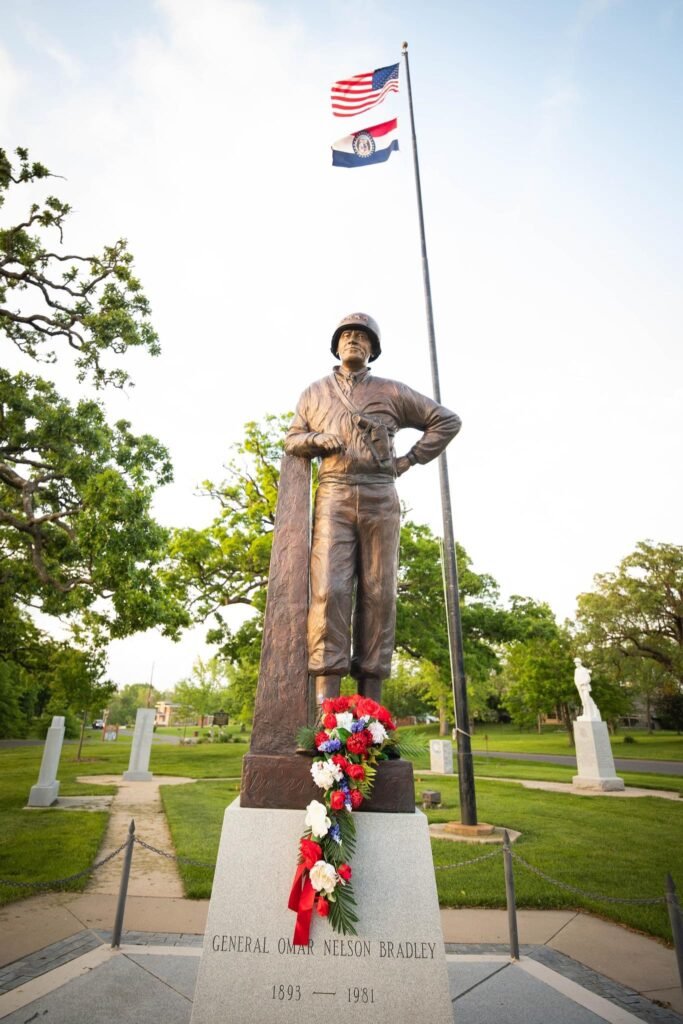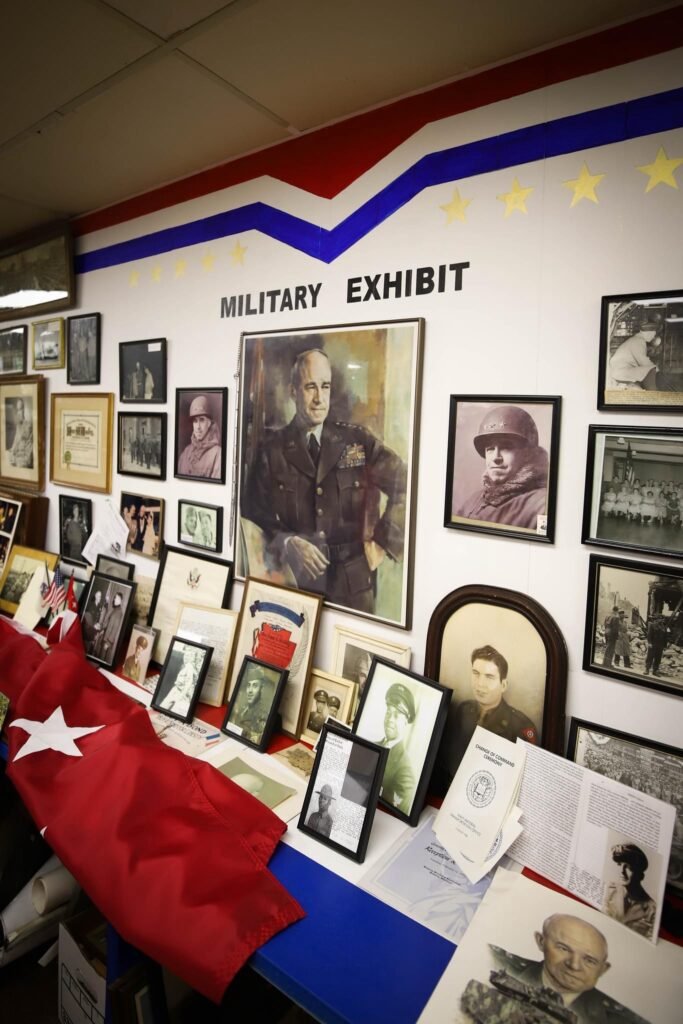General Omar Bradley stands as a towering figure in American military history, not just for his strategic brilliance but also for his distinction as the nation’s last Five-Star General as of 2024. Born on February 12 in Clark, Missouri, Bradley’s journey from a small town to the pinnacles of military leadership is a testament to his exceptional skill, humility, and dedication. His early years in Moberly, Missouri, where he moved during grade school and later graduated from Moberly High School in 1910, laid the foundation for a career that would profoundly impact the course of U.S. military history.

Bradley’s military career, marked by pivotal roles during World War II and significant contributions in the post-war era, exemplifies leadership and strategic foresight. His command of the largest U.S. Army in history during the Invasion of Normandy and his tenure as the first-ever Chairman of the Joint Chiefs of Staff under President Dwight D. Eisenhower underscore his monumental contributions to American and global security. This article delves into the life and legacy of General Omar Bradley, exploring the depth of his influence and the enduring mark he left on the United States military and the world at large.
The Making of a Leader: Early Life and Military Ascension
Omar Bradley’s journey from the humble beginnings in Clark, Missouri, to becoming a central figure in the United States military is a story of determination, intellect, and leadership. Born into a modest setting on February 12, his early life in Missouri, including a significant portion in Moberly, shaped the man he would become. Graduating from Moberly High School in 1910, Bradley’s academic and leadership talents began to surface, laying the groundwork for his future military career.
Seeking to further his education and drawn to military service, Bradley attended the United States Military Academy at West Point, where he honed his skills and deepened his understanding of military strategy and leadership. His time at West Point was not just about academic achievement; it was here that Bradley cultivated the qualities of resilience, discipline, and a profound sense of duty—traits that would define his approach to leadership throughout his career.
Upon graduation, Bradley embarked on a military path that saw him ascend through the ranks, serving in various capacities and gaining experience that would prove invaluable during World War II. His early career was characterized by a steady accumulation of responsibilities, each role preparing him for the significant challenges he would later face on the global stage.
Bradley’s leadership style was distinctive. Known for his humility and focus on the welfare of his soldiers, he earned the respect and admiration of both his peers and subordinates. This period of growth and development was crucial, as it not only shaped Bradley into a competent military leader but also ingrained in him a deep understanding of the human aspects of warfare—insights that would guide his decisions during some of the most pivotal moments in world history.

Commanding the Largest Army: WWII and the Invasion of Normandy
During World War II, General Omar Bradley epitomized the essence of American courage and determination. As the commander of the 1st United States Army during the pivotal Invasion of Normandy, Bradley’s leadership was instrumental in orchestrating one of the largest and most complex military operations in history. Commanding over 1.2 million soldiers, Bradley’s strategic insights and steadfast resolve played a crucial role in the liberation of Europe from Nazi tyranny.
Bradley’s approach to leadership during this critical period was marked by meticulous planning, an unwavering commitment to his troops, and a profound understanding of the gravity of the task at hand. The success of the Normandy invasion, a turning point in the war, reflected not just military might but the embodiment of American values of bravery, sacrifice, and a relentless pursuit of freedom.
The legacy of General Bradley and the soldiers he led is a testament to the enduring spirit of American patriotism. Their bravery and resolve in the face of overwhelming odds continue to inspire future generations. For those interested in exploring the depths of this legacy and the characteristics that define American patriots, resources that delve into the legacy of bravery and resolve offer insightful perspectives on the qualities that have shaped the nation’s history.
Bradley’s command during WWII exemplifies the profound impact of principled leadership and the indomitable will of the American people. His strategies and decisions during the Invasion of Normandy underscore a legacy that extends beyond military conquests, embodying the spirit of national unity and the relentless pursuit of peace and justice.

A Legacy Beyond the Battlefield: Post-War Contributions and Honors
After World War II, General Omar Bradley’s career did not conclude with the cessation of hostilities; rather, it transitioned into roles that would further cement his legacy within American military and public life. His appointment as the first-ever Chairman of the Joint Chiefs of Staff by President Dwight D. Eisenhower marked a significant chapter in his career, placing him at the forefront of shaping post-war military strategy and policy.
In this capacity, Bradley’s influence extended into the Cold War era, where he played a pivotal role in navigating the complex geopolitical landscape of the time. His leadership during this period was characterized by a strategic vision that balanced military preparedness with diplomatic engagement, reflecting his deep understanding of the nuances of global security and the importance of peace.
Beyond his military and strategic accomplishments, Bradley’s legacy is also honored in various memorials and institutions, ensuring that his contributions to American history and military excellence are remembered. His life and career serve as an enduring reminder of the qualities that define true leadership—integrity, humility, and a commitment to serving one’s country.
For those interested in exploring the stories of other heroic figures from World War II, individuals like Ace Alexander Vraciu stand out for their bravery and contributions. Vraciu, one of the war’s most accomplished fighter aces, exemplified the courage and resolve that defined America’s military efforts during the conflict. Stories like his highlight the valor and sacrifice of individuals who fought to secure freedom and peace, complementing the broader narrative of leadership and dedication represented by figures like Bradley.
General Omar Bradley’s post-war roles and the recognition he received reflect a life devoted to service, both in times of war and peace. His story, alongside those of other wartime heroes, underscores the diverse ways in which individuals have shaped the course of American history and the enduring principles of courage, leadership, and commitment to the greater good.

As an Amazon Associate we earn from qualifying purchases through some links in our articles.




